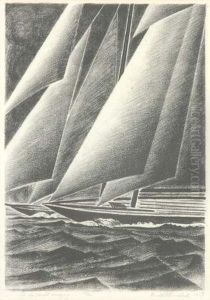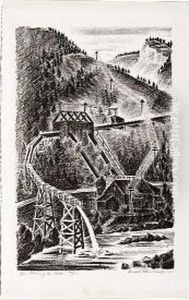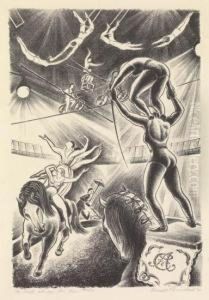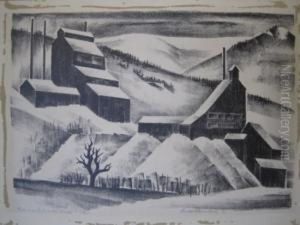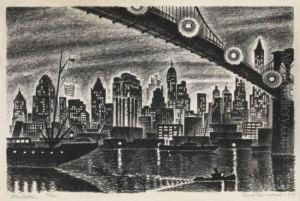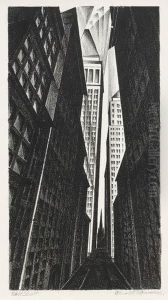Arnold H. Ronnebeck Paintings
Arnold H. Rönnebeck was a prominent figure in the early 20th-century American art scene, known for his contributions as a lithographer, sculptor, and museum director. Born in Nassau, Germany, in 1885, Rönnebeck came from a family with an aristocratic background, which afforded him the opportunity to pursue his artistic education across Europe. He was deeply influenced by the avant-garde movements of his time, particularly by Cubism and Expressionism, which he encountered during his studies and travels in Germany and Paris. In Paris, he became part of the vibrant artistic community, mingling with influential artists and writers of the era, including Gertrude Stein and Marsden Hartley.
Rönnebeck emigrated to the United States after World War I, a conflict in which he served in the German army. Settling in New York City, he quickly immersed himself in the local art scene, becoming a part of the circle of artists associated with Alfred Stieglitz's 291 gallery. His work from this period reflects the modernist influences he absorbed in Europe, characterized by a bold use of form and a focus on urban and industrial subjects. In 1926, seeking a change from the bustling life of New York, Rönnebeck moved to Denver, Colorado, where he became a pivotal figure in the region's art community. He served as the director of the Denver Art Museum, using his position to promote modern art and support local artists.
Throughout his career, Rönnebeck was dedicated to exploring and experimenting with various mediums, but he is perhaps best remembered for his lithographs and sculptures. His lithographs often depicted the dynamic energy and architecture of American cities, while his sculptures ranged from small bronze pieces to large public commissions, reflecting his interest in integrating art with public spaces. Arnold H. Rönnebeck's legacy is that of an artist who bridged European modernism with American themes and landscapes, significantly contributing to the cultural life of the United States during the first half of the 20th century. He passed away in 1947, leaving behind a body of work that continues to be celebrated for its innovation and artistic merit.
